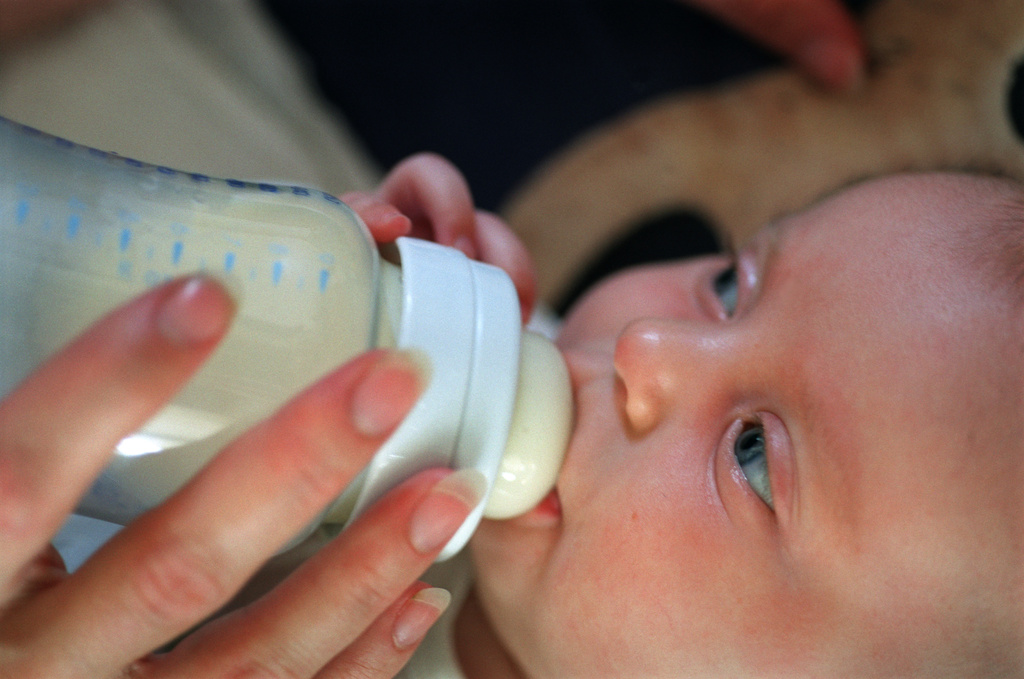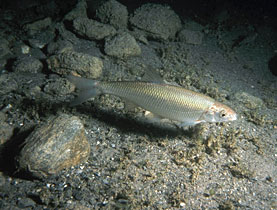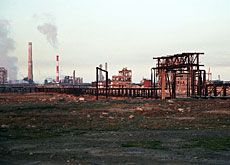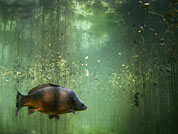Banned for 24 years, PCBs still linger

A government study says fish in Swiss waters are not overly contaminated with PCBs but others say too little is known about the effects the chemicals have on humans.
The Federal Environment Office recently concluded that levels of the banned chemical were acceptable. Critics argue that fish, or the waters they swim in, cannot necessarily be given a clean bill of health.
The way cantonal governments are evaluating toxicity is “calamitous”, says Walter Wildi, a geologist at Geneva University’s Institute F.A. Forel.
Banned in Switzerland since 1986, polychlorinated biphenyls are industrial compounds that were used for decades as lubricants, heat-transfer fluids and plasticisers among other things.
The chemicals accumulate in animal tissue and are especially deadly to fish and invertebrates. Because they do not easily degrade, they linger easily in the environment.
Environmental toxicologist Margret Schlumpf says that until now, few studies have been done in Switzerland on PCBs in humans. She says the problem with previous studies is that research focused on individual substances.
“That does not reflect the current reality,“ said Schlumpf. “Today people are exposed to different chemical mixtures, which could have more serious effects than was previously assumed.“
Recommendations
The study found concentrations of PCBs and dioxins clearly exceeding permissable levels in fish from rivers and lakes across the country: from the Birs, a river near the industrial centre of Choindez, from the Saane below a landfill site, from the upper Rhine as well as from Lake Lugano.
“If the fish consumption recommendations… are not exceeded, according to the current knowledge available, there is no danger to health, ” Josef Tremp, a scientist at Environment Office and co-author of the PCBs report, told swissinfo.ch
The joint recommendations were published to help cantons make decisions pertaining to fishing and fish consumption in particularly affected regions and “to reduce a possible health risk from fish consumption”.
Based on the study results, authorities also recommend that cantons measure PCB levels in areas close to bodies of water.
Last year the federal cabinet concluded that legal and administrative structures currently in place to assist cantons with PCBs in buildings, facilities, and equipment, as well as the disposal polluted waste, were sufficient.
Cantons “behind the times“
It said action was needed to assess PCBs in buildings and electrical equipment, and in implementing technical regulations in the areas of construction, decontamination, and disposal.
“Most cantons are behind the times,” said Martin Forter, a geographer and contamination expert who recently published a book on the consequences of chemical substances on humans and the environment.
“The first thing that has to be done to solve the problem is to prevent PCBs from getting into the rivers,” he said.
Forter is concerned too much emphasis in Switzerland is placed on managing chemical materials, instead of on opposing their use.
One way scientists have been able to prove that PCBs remain in fat tissue is by examining their levels in breast milk. “There are women with higher and lower levels of PCBs in their breast milk, but there is no such thing anymore as breast milk free of PCBs,” said Schlumpf.
While Swiss levels are average for Europe, the effects of contamination over time should not be minimised, she says, especially during early child development.
Corinne Buchser, swissinfo.ch (Adapted from German by Kathleen Peters)
In various species of birds of prey, which like people stand at the end of the food chain, reproductive abilities have deteriorated to a worrisome point over the past 30 years, particularly because of PCBs, the Swiss report found.
Consequences include higher toxicity for offspring because the enzyme system in young birds in particular is apparently unable to efficiently metabolise PCBs.
High concentrations of environmental pollutants have even been deemed responsible for the extinction of otters in Switzerland.
The effects of endocrine disruptors are important because they affect embryos and young animals differently than adults. Effects may be delayed and might possibly even occur only in subsequent generations.
Polychlorinated biphenyls are toxic, persistent, and accumulate in terrestrial and aquatic ecosystems. They are distributed worldwide through the atmosphere.
PCBs have high chemical stability and therefore degrade very slowly. They accumulate in the fatty tissues of animals and humans and stay in the food chain for years.
PCBs are known for a wide range of chronic effects. They damage the immune system, central nervous system and the endocrine system, among others. Some PCBs have dioxin-like effects.
Experiments with rats indicate that small doses administered over a long period of time are more dangerous than a larger single exposure.
In Switzerland, PCBs have been banned in “open systems”, a category including elastic sealants, corrosion protection coatings and paints, since 1972. A total ban on PCBs was introduced in 1986.

In compliance with the JTI standards
More: SWI swissinfo.ch certified by the Journalism Trust Initiative




You can find an overview of ongoing debates with our journalists here . Please join us!
If you want to start a conversation about a topic raised in this article or want to report factual errors, email us at english@swissinfo.ch.